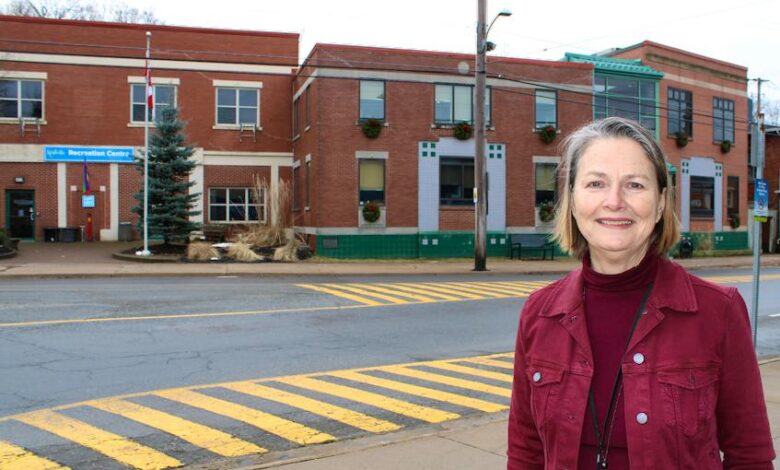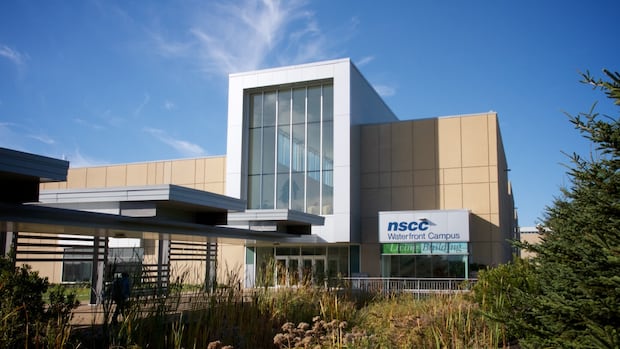BIG DECISION COMING: Kentville, N.S., staff, councillors looking at options to make municipal building accessible by 2030

KENTVILLE, N.S. — Kentville councillors are considering everything from gutting town hall to looking for a new municipal home as it works towards complying with provincial legislation.
The Accessibility Act, passed and proclaimed in 2017, recognized accessibility as a human right and set 2030 as a target for making all public spaces accessible.
“It’s so important because it comes down to dignity, it comes down to providing a service,” Kentville Mayor Sandra Snow said. “And if we’re going to provide that service, we have to be able to provide it to every person that wants to come through that front door.”
The town had Halifax firm Anne Sinclair Architect conduct an accessibility audit on the building in December. A staff report, based on the findings, was presented at the council advisory committee earlier this month. The audit looked at everything from the main entrance, ramps, doorways, stairs, interior spaces, washrooms and parking lot amongst other items.
“It fails miserably,” Snow said of the town hall and adjoining Kentville Recreation Centre.
“It just does not meet what we need to meet by 2030,” she added. “You have to think of everything from the position of light switches to the width of office doors.”
The 15,000-square-foot complex is comprised of three separate buildings that date back to 1946 and 1953. Two buildings were joined in 1990 and the third about 15 years ago. The staff report noted a significant challenge is different floor elevations in the three buildings.
Some areas have been upgraded to improve accessibility, including a few projects done during the COVID-19 pandemic, but many areas are still non-compliant.
Entrances to the building are not fully accessible, the elevator does not go to all spaces and staff reported it is often broken, doors are undersized and ramps, which are at different grades, are not compliant.
The front door to town hall is not accessible, but there’s a ramp from the parking lot to the back door. People in a wheelchair can get to the elevator and go to the second floor, where many of its administrative offices are located, but they can’t get to the second floor of the recreation centre on their own.
“To get into the rec centre itself, there’s still three steps,” Snow said. “So, a person coming up in a wheelchair needs to basically be lifted into the room. So, that’s completely unacceptable.”
Snow said accessibility is not only about mobility. It includes many things including visual and hearing impairments and some mental disabilities. She noted the elevator buttons don’t have Braille and there’s no sound to let people with visual impairments know the door has opened.
Options
A staff report identified four options based on the audit. They were:
- Stay in the building, gut it and rebuild it to be efficient and accessible.
- Buy a building and renovate it to fit the town’s needs.
- Construct a building in a new location.
- Tear down the existing town hall/recreation centre and build on the current site.
What the report didn’t do is put a price tag to what the options would cost.
Snow said the report identifies what needs to be fixed.
“It’s a matter of figuring out how to do it,” she said, noting it is a huge but necessary project.
“Do you preserve old buildings, do you hang on to them, do you repurpose them and at what cost?”

Deputy Mayor Cate Savage said it is hard to compare options without having a cost associated to them.
Coun. Andrew Zebian said he wasn’t in favour of spending money on a new building if the town didn’t have to. He also questioned where town employees would work if the current town hall was torn down and a new facility built.
“I think we have a great building,” he said.
Council directed the chief administration officer to provide a full report with costs at the March council advisory committee meeting.
Snow also asked council members to come up with some non-negotiable features for town hall.
“For example, does the town hall need to be in the centre of town,” she said. “Do we need this council chamber or could we share a council chamber with someone else?”
Recommendations
An accessibility audit of Kentville’s town hall and recreation building came with some significant findings, including:
- The building’s main entrance and main foyer are not accessible and needs to be redesigned.
- The building is not accessible and needs to be deeply renovated.
- Public and staff washrooms are not accessible and need to be redesigned.
Energy
The town had a deep energy audit completed on town hall in December 2022.
Recommendations from the report, if implemented, would decrease energy cost by 45 per cent. They included mechanical improvements, like replacing windows and doors; operational controls, such as LED lighting upgrades; and renewable energy generation, such as roof-mounted solar photovoltaics.
Snow said the two reports work together.
“We are trying to make these changes and to be very mindful that every time we do something that we’re taking all of these pieces into the equation,” Snow said.
Need to know
- Almost one in five Nova Scotians older than 15 (about 144,000 people) identify as having a disability. It is the largest percentage of any Canadian province. The provincial government anticipates the number will increase as the population ages.
- The province developed its strategy by consulting with more 1,5000 Nova Scotians between December 2017 and June 2018.
Source – Access By Design 2030, a 2018 provincial government report.



